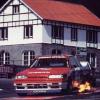99 R34Gtr Vspec, Now Stroked!
Announcements
-
Similar Content
-
Latest Posts
-
Only needed to pull out the seats, center console and gear shifter surround, took a weekend and a fair few beers. You get to look forward to finding all sorts of weird shit under the seats and carpet, I pulled out a Chinese dudes passport from 2003, 220 yen and a condom wrapper 😆
-
Well, turns out not a lot happened from back then to now, between life again, and working on 3 separate other cars (only one of which was mine, and will now be departing the household soon). So I decided with the whole "don't go outside, it's a cyclone!" Turning in to being not a whole lot, I ventured down to the garage, found a couple of water leaks in the shed (the main one I've already fixed), and then ended up "stuck" as it started pouring rain, and I didn't want to walk back inside in the pouring rain. This meant I ended up taking a look at the Skyline, and trying to work out what past Matt had been upto. I retraced a few things out from scratch, added the rest of the power feeds in that I needed for the indicators, and headlights. Double checked I'd wired a few things up correctly (and worked out how I wired a few things to begin with), updated my sparse notes. Added one of the ground points. Oh, and got really really dusty, as the car is quite dirty. Wrote up quickly what should be left for me to do with the wiring too. Adding the below photos more for my records than anything else. I need to make myself a proper book for the car that details everything, and how I've done it, but for now, this is my records... The third image is my most important one for me, and I need to draw it out into a proper schematic eventually. The last photo is my re-written list, I'd have put it on the white board, except I had to take the white board down to fix one of the water leaks.
-
Can try Maxima. Or random Infiniti models from the same era. Good luck with your hunt, let us know what you find!
-
I got the Repco video recommended on YouTube.
-







Recommended Posts
Create an account or sign in to comment
You need to be a member in order to leave a comment
Create an account
Sign up for a new account in our community. It's easy!
Register a new accountSign in
Already have an account? Sign in here.
Sign In Now